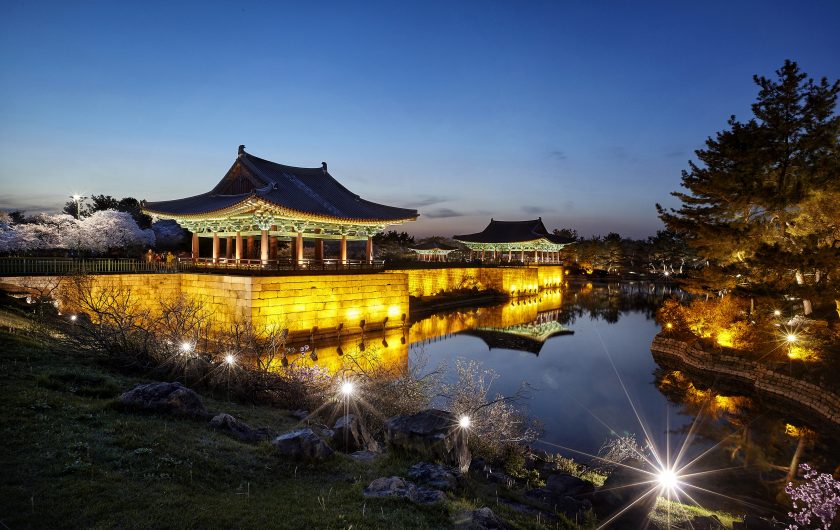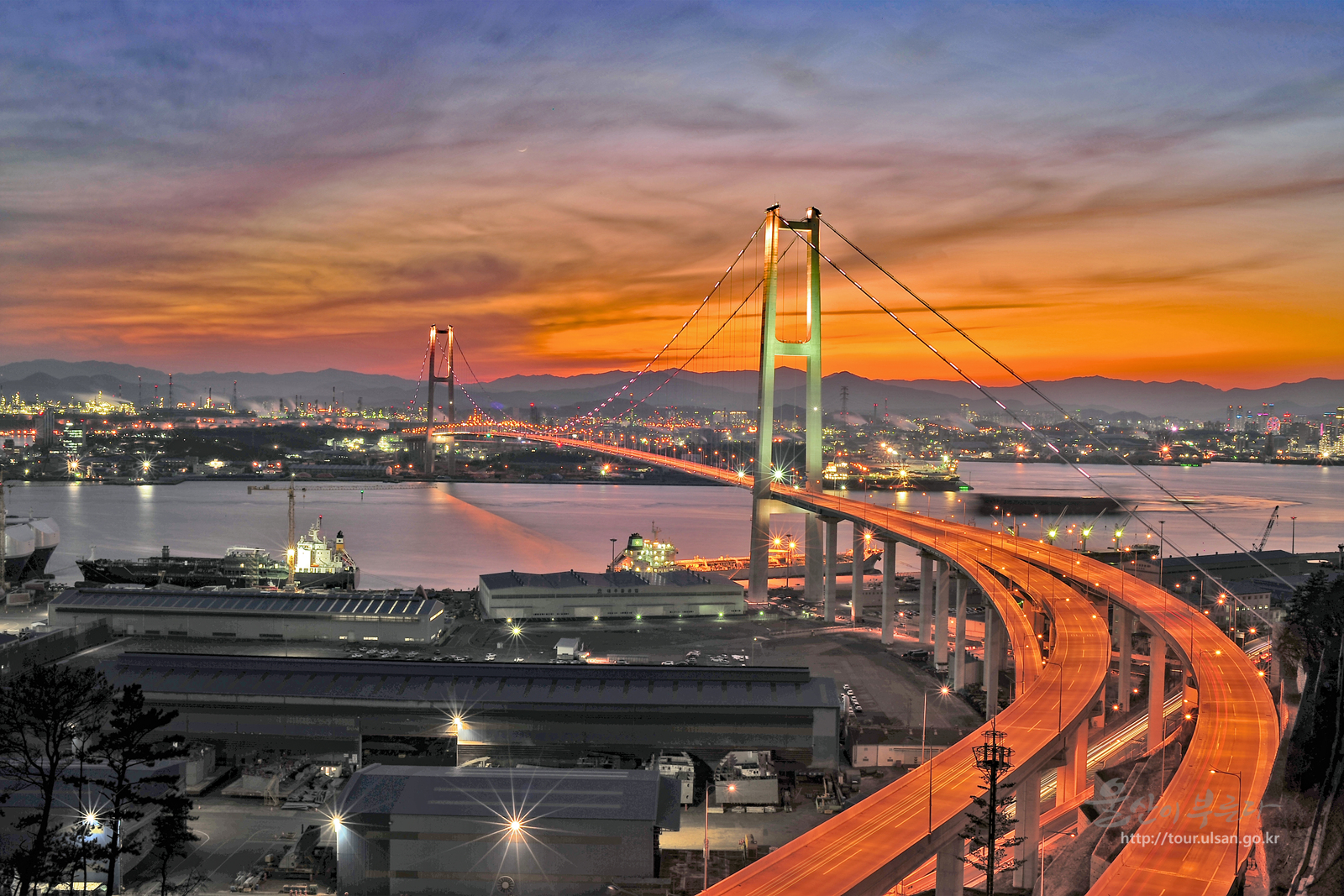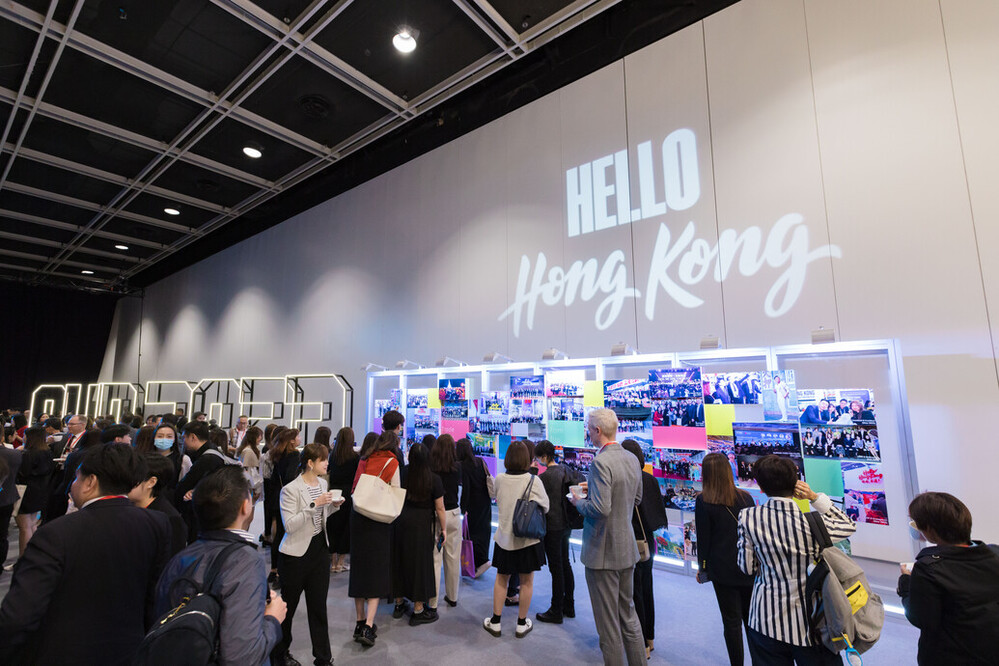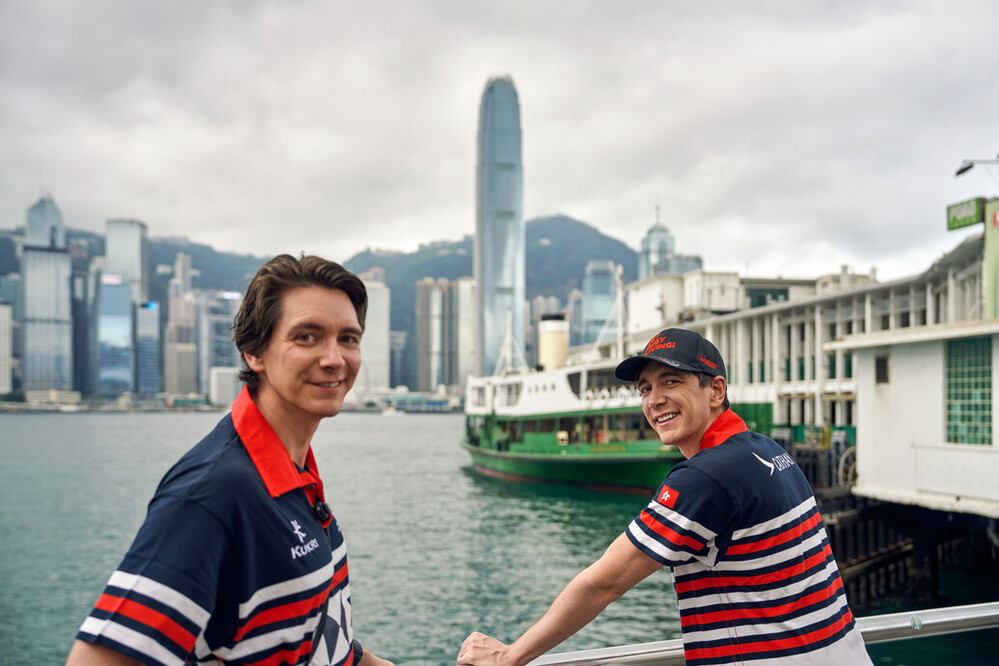1/ Donggung Palace & Wolji Pond (above)
Once part of the palatial grounds during the Silla reign (57BCE-935CE); important banquets were once hosted at the palace.
What’s it like? Like stepping back in time, particularly if you arrange to wear hanbok, which many groups do. Featuring a mix of restored and natural form structures and pavilions that showcase some of the thousands of ancient relics found at the sight during restoration. Most relics are housed in the Gyeongju National Museum. The main draw, for visitors and locals alike, is the large manmade pond and manicured grounds said to date back to 674, when it was built for King Munmu, who enjoyed relaxing by the pond.
These days it’s most popular at night, particularly under a full moon when the lit pavilions, structures and trees take on a mirror image reflection in the water. For the complete experience stroll around the entirety of the oval pond.
Why go? An immersive and leisurely introduction into the Unesco World Heritage city of Gyeongju.

2/ Gyeongju Gyochon Traditional Village
The site of the Silla period national school transformed into a traditional Joseon-era (1392-1910) hanok village.
What’s it like? It feels exactly as a charming village should, with quaint buildings, narrow streets, alleyways and hidden discoveries, combined with a Korean cultural aesthetic. A visit here can be structured with groups attending tea ceremonies and partaking in several traditional arts and crafts classes. Or it can be more free form, with participants able to find what appeals most, with picture-perfect straight-out-of-a-Korean drama vistas at every turn. Groups can stumble upon the man with the lucky stone that can be rubbed for a coin donation, stop for teas and snacks at a small cafe, or visit a master weaver of Nubi quilting. The village is also a KTO-approved Korea Unique Venue and hosts small groups seeking a unique space for a meeting or event.
Why go? The village highlights many classic traditions with enough variety to suit different tastes.
www.gyochon.or.kr
3/ Seokguram Grotto
A unique man-made stone shrine completed in 774.
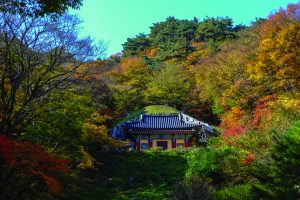
What’s it like? Gyeongju is often referred to as the “museum without walls”, largely because it is home to more tombs, temples, rock carvings, royal ruins, and Buddhist statues than anywhere else in South Korea. One of the most important is Seokguram Grotto, showcasing Buddhist artistry and featuring a seated stone buddha surrounded by numerous guardians and lesser deities, and relief engravings. From here it is possible to get to the Bulguksa temple, considered a stunning example of Silla-era architecture, via a 2.2km downhill walk; both are Unesco listed.
Why go? To marvel at this 8th century construction feat, try imagining how hundreds of large granite boulders were transported up a narrow mountain path. There is also the stunning mountain scenery leading to the sea, which is particularly majestic at sunrise.
4/ Ssambap & Haejangguk
An important part of South Korean culture is the cuisine, and Gyeongju is famous for a number of dishes, including these two culinary specialties.
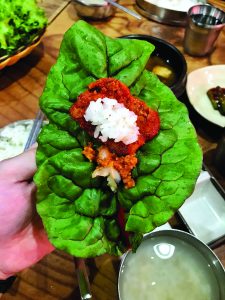 What’s it like? Ssambap is similar to a wrap, but instead of flatbread, lettuce or pickled leaves are used to contain a variety of delicious items, from seafood and pork, to seasonal vegetables and herbs, plus rice. Diners are welcome to create their own combination with tables laden with over 20 small refillable dishes and condiments. Ssambap is said to be good for maintaining health and increasing energy. Haejangguk, also known as hangover soup, features a clear broth made from dried fish with soybean sprouts, kimchi, buckwheat jelly and seaweed. It might not sound sumptuous, but locals swear by it.
What’s it like? Ssambap is similar to a wrap, but instead of flatbread, lettuce or pickled leaves are used to contain a variety of delicious items, from seafood and pork, to seasonal vegetables and herbs, plus rice. Diners are welcome to create their own combination with tables laden with over 20 small refillable dishes and condiments. Ssambap is said to be good for maintaining health and increasing energy. Haejangguk, also known as hangover soup, features a clear broth made from dried fish with soybean sprouts, kimchi, buckwheat jelly and seaweed. It might not sound sumptuous, but locals swear by it.
Why try? When a city dedicates areas or streets to specific dishes they need to be experienced. For Ssambap go to the Daereungwon area and for the soup Parujeong Street.
5/ Gyeongju World
An amusement park on the western shore of the Bomun Lake.
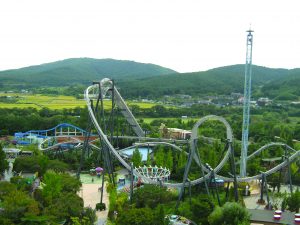 What’s it like? Standing out like fireworks in a night sky, Gyeongju World almost seems to have been transported from another planet, so far removed from the historical vibe of the rest of the city. There are numerous rollercoaster rides, including the Phaethon, South Korea’s first inverted rollercoaster, with six inversions, reaching speeds of up to 90kph. For more sedate thrills there is the option to play golf, with 12 courses in the area, including Gyeongju Country Club course that offers night and day-break golf.
What’s it like? Standing out like fireworks in a night sky, Gyeongju World almost seems to have been transported from another planet, so far removed from the historical vibe of the rest of the city. There are numerous rollercoaster rides, including the Phaethon, South Korea’s first inverted rollercoaster, with six inversions, reaching speeds of up to 90kph. For more sedate thrills there is the option to play golf, with 12 courses in the area, including Gyeongju Country Club course that offers night and day-break golf.
Why go? An escape from the business side of meetings and a great team-bonding evening.
